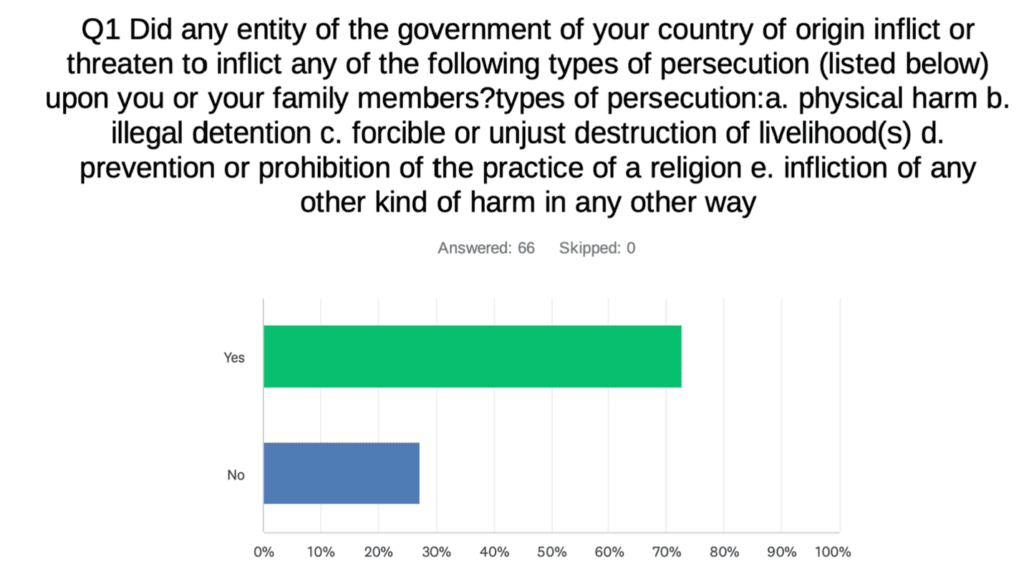Ashwin Parulkar, Senior Research Specialist
Kathryn Cardone, Data Analyst Specialist
HELP USA has been tracking the numbers of undocumented migrants from the Southern border that have been entering, and moving within, our shelters since August 2022. At that time, 150 undocumented migrants lived in HELP family shelters, and 61 in HELP single shelters.
By November, the undocumented migrant family population in HELP shelters remained relatively stable while the number of single adult migrants quadrupled, from 61 to 262 people during this time period. There was also low turnover among the family and high turnover among the single adult migrant populations. (Tables 1&2).


What explains these differences? Single adults and families with children apply for placements in shelters at separate “intake” centers. Officials and social workers “assess” applicants’ needs for safe and secure shelter and housing, then assign them to a shelter that will best accommodate them. One “intake” center in the city “assesses” family applicants and “assigns” shelters for them. Single adults receive assessment services in select shelters designated for this purpose and live in these “assessment shelters” temporarily before moving into their “assigned” shelter. HELP USA manages two “assessment shelters” for single women: HELP Women’s Center (HWC) and Franklin.
“Assessment shelters” generally have higher turnover rates than “assigned” shelters because they are designed to accommodate people for short durations (around 30 days). A surge in the single adult migrant population may have accelerated their movement through “assessment” shelters. HWC transitioned to a men’s shelter in September to accommodate the rising male migrant demographic. In total, 1,454 single adult men and 234 single adult women have received assessment services at HWC and Franklin, respectively, through November 1. The daily number of migrants in HWC declined throughout November (figure 1). Those families are placed in shelters by a separate intake facility may, partly, explain the relative constancy of migrant families in their assigned shelter since August.

Their longer stays in specific shelters will require social workers to provide an additional and consistent level of services. It is necessary to understand the demographics and needs of this population to accomplish that task. Our research team, therefore, designed a migrant family survey, using Survey Monkey, across three parameters:
- refugee status and asylum eligibility, in accordance with the federal government’s definitions of these terms
- family profiles, basic needs & capabilities of migrants across countries of origin and
- the scale of need for asylum and other services.
| Country of Origin | n | % |
| Honduras | 28 | 44.4% |
| Venezuela | 11 | 17.5% |
| Colombia | 9 | 14.3% |
| Mexico | 5 | 7.9% |
| Dominican Republic | 3 | 4.8% |
| Ecuador | 2 | 3.2% |
| El Salvador | 1 | 1.6% |
| Haiti | 1 | 1.6% |
| Mali | 1 | 1.6% |
| Nicaragua | 1 | 1.6% |
| Nigeria | 1 | 1.6% |
| Total | 63 | 100% |
table 3 (Source: HELP USA Refugee and Asylum-Seeking Population Survey, September – October 2022)
Between September and October 2022, front-line HELP USA staff in one family shelter surveyed 66 adult head of household clients. 92% were females, 58% had at least two children living with them in the shelter, and half (49%) were under the age of 35 .
We found that 44% of all respondents were from Honduras (table 3). According to the Brookings Institution, migration from Honduras to the United States increased from 513 to 188,000 persons between 2012 and 2019 due to “violence”, associated with the increase of “drug trafficking” in the region, and “food insecurity,” linked to climate disasters that have compromised the livelihoods of the country’s vast small farming population.

73% of respondents surveyed met the official criteria for refugee status (figure 2). According to the U.S. Department of Homeland Security’s Refugee, Asylum, and International Operations Directorate (RAIO), migrants in the United States can be considered refugees if they left their countries of origin due to the experience or fear of persecution, conflict, or violence. Under this definition, refugees are eligible to apply for asylum in the United States.
A high share of respondents had employable skills and accessed some essential services for their families in the shelter system: 30% were employed at the time of the survey, 62% had at least a high school diploma (22% had some college education), and all children of 87% of these adult respondents were enrolled in New York City schools.
Yet, widespread hunger marked their journeys from their home countries to New York City — 70% indicated that they experienced some form of hunger before arriving in shelters.
One-third (32.8%) of respondents have applied for asylum, three-fourths who had not applied for asylum wished to do so, and nearly half (48.3%) reported that their most urgent need was legal aid to process asylum requests.
We can conclude that migrant families with children are, largely, young, female-headed households that are eligible for, and in some cases have applied for, asylum services. The pattern of distress migration from Honduras over the last decade indicates that many migrants currently in shelters may have lived in the United States for long durations under precarious circumstances before arriving in New York. According to media reports, the new sanctuary hotels offer asylum services. There is also an urgent need to ensure asylum services in shelters. The challenge will be to equitably provide legal aid to migrants who live in specific shelters consistently yet indefinitely (families) and migrants who move through quickly, and perhaps episodically (single adults).
HELP USA is using these findings to design services for migrant families. Future research will identify the needs and profiles of the mobile single adult migrant population.
